Whether you’re a chicken aficionado considering adding the Isbar chicken to your backyard flock or maybe want to learn a thing or two about the lovable breed, you just came to the right place.
Isbar chickens aren’t just like any other chicken — they have unique qualities, so it’s necessary to get yourself well-versed with the ins and outs of the breed before making it part of your flock.
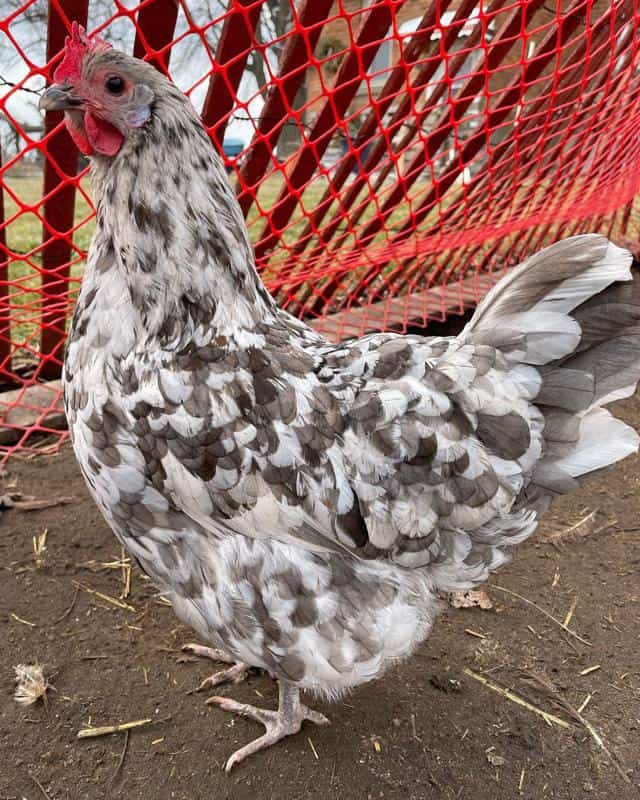
In this blog post, I’ll unravel everything there’s to know about our Isbar feathered friends, right from their creation process and plumage to their dietary requirements and egg-laying proficiency.
Of course, the content has more than just that, so read carefully to learn more about the Isbar chickens!
Isbar Chicken Overview
Just in case you’re in a hurry, this table provides you a quick overview of the Isbar chicken breed:
| Breed size | Medium |
| Weight | Male: 5 to 5.5 pounds
Female: 3 to 3.5 pounds |
| Color of feathers | Black, Blue, Splash |
| Dual-purpose | No, only for egg production |
| Disposition | Active, friendly, adaptive, and low-maintenance |
| Number of eggs per year | 150 to 250 |
| Egg size | Medium to Large |
| Egg color | Green-tinted, ranging from moss green to pastel green, but sometimes overlaid with purple or brown speckles. |
| Comb type | Single |
| Color of combs, wattles, and ear lobes | Light red |
| Maturity | 22 to 24 weeks |
| Lifespan | 5 to 10 years |
| Common health problems | Immunosuppression, chronic respiratory disease (CRD), and salmonellosis |
The Origin of Isbar Chickens
Isbar chickens aren’t among the ancient breeds. In fact, they were developed in the second half of the 20th-century courtesy of a Swedish pastor, Martin Silverrund, but the breed didn’t get to the United States until 2011.
Martin Silverrund’s goal was to develop auto-sexing bird breeds with impressive egg-producing capabilities and the ability to lay large, unusually colored eggs.
In pursuit of that goal, Silverrund is believed to have invented several chicken breeds during the 20th century, but it’s the Isbar chicken that’s perhaps his most famous handiwork.
To develop the breed, Silverrund worked with three chicken breeds:
- New Hampshire
- Rhode Island Reds
- Cream Legbar Chickens
He began by pairing the New Hampshire chickens with the Rhode Island Reds and later combined the brown-egged gene of the two birds with the blue-egg gene of the Cream Legbars, and that’s how he came up with a chicken that produced green-tinted eggs.
They’re No Longer Called “Isbar” Chickens
While Isbar is the name known by most people, this chicken breed was renamed to Silverrund’s Blue in 2016, and for several good reasons.
Firstly, the name “Is-bar”, usually pronounced as ice-bar, created a misunderstanding to most chicken keepers. The last bit of the name made people believe that the breed is one of the “barred” varieties, when in real sense it doesn’t have any barring patterns on the feathers.
Secondly, the name Silverrund’s Blue was adopted as a way to honor the developer. Silverrund had invented several breeding techniques that are still in effect decades after his death (he died in the 1980s), and so naming the Isbar chicken after him was a way of acknowledging his invaluable contribution in the poultry field.
Size & Appearance
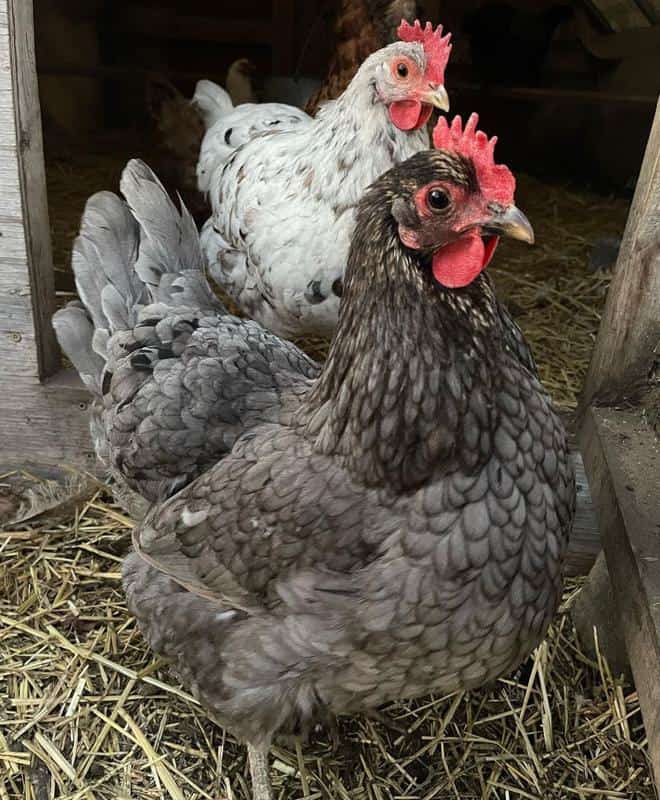
Usually, Silverrund blue chickens weigh anywhere between 3 to 5.5 pounds depending on whether it’s a roo or a hen.
Like most chicken breeds, Isbar males typically weigh more than the females, with their weight spectrum running from 5 to 5.5 pounds when fully mature.
Female Isbars, on the other hand, can weigh anywhere between 3 to 3.5 pounds, giving the chicken a general weight range of 3 and 5.5 pounds.
Their eyes are extremely dark, almost entirely black, and their legs are green to match the color of their eggs.
Whether male or female, these single-combed chickens come in either of these three color varieties;
- Black
- Splashed
- Blue
The black variety doesn’t always start black right from their chick level. Sometimes the chicks will have a black down with white spots, but as the bird grows, the white feathers slowly vanish, leaving the chicken with purely black plumage.
As for the splash variation, they come with a white base color, but have a blue feathering that runs across their entire plumage.
Speaking of their blue counterparts, the shade can range from light to dark blue. Also, it can either be solid blue or blue coupled with some lacing around the neck.
The black and splashed varieties were the first to be developed, but it’s the blue variant that’s the cutest of all and, unfortunately, the rarest to find at the same time.
Isbar Chickens Temperament
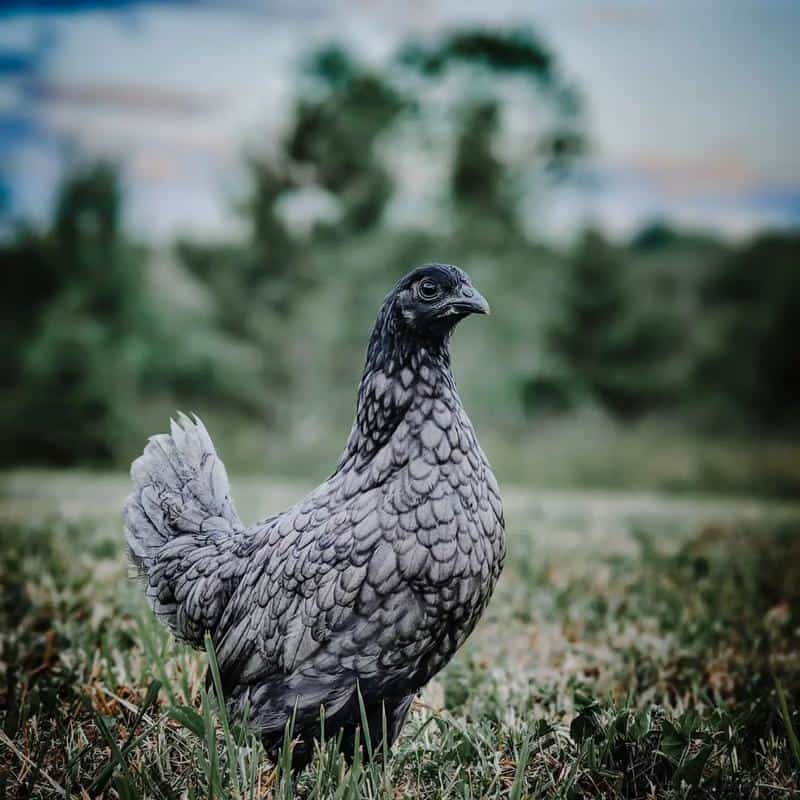
On temperament, Isbar chickens generally have an admirable personality. In fact, there’s so much for other chicken breeds to borrow from the Isbar variety. It’s a friendly, lively, adaptive, and low-maintenance chicken.
Friendly
Once you add Isbar chicken into your backyard flock, among the first things you’ll probably notice is the bird’s friendly demeanor.
Well, Isbar isn’t the best bird for cuddling purposes, but it seems to immensely cherish moments spent around humans, other chickens, and pets.
Don’t get surprised when you notice the bird spending most of the time near you when foraging for food.
Lively
Another thing you’ll notice about Isbar chickens is that they’re really active birds. These aren’t the kinds that will love to spend most of their day in the coop.
They’re always curious and happy when allowed to free range, so ensure you at least have a small backyard space where they can stretch their legs and explore a few things in their surroundings.
But that’s not to say they can’t be confined. They certainly can without any issues. However, presented with the opportunity to choose between remaining put in the coop and exploring the surroundings, they’re more likely to go with the latter option.
Adaptive
Adaptability is a very crucial aspect in chickens. When a bird is adaptive, it means it can easily make the necessary adjustments in response to the changes in their surroundings.
Speaking of Isbar chickens, they’re among the adaptive chicken breeds you can add to your flock. These birds will take little time to settle in your home, especially when you allow them to free range a few days after you bring them into your home.
Plus, it’s a cold-hardy breed, meaning that it withstands cold seasons just as well as it does the hot moments of the year. That means their productivity is less affected by weather, which is a good trait if you intend to use the bird for enriching your egg cartons.
Low Maintenance
The other adorable characteristic of Isbar chickens is that they don’t require much maintenance. With their deep passion for free ranging and foraging, Isbar chickens won’t solely rely on their keepers for food.
Plus, being super-hardy birds that can remain healthy in a variety of climates, you won’t have to spend much on healthcare when keeping these chickens.
So, as you can see, there’s so much about Isbar chickens that make them lovely birds. However, it’s worth mentioning that temperament more depends on the individual bird than the breed, although what we’ve shared is what’s commonly seen in Isbar chickens.
Egg Production
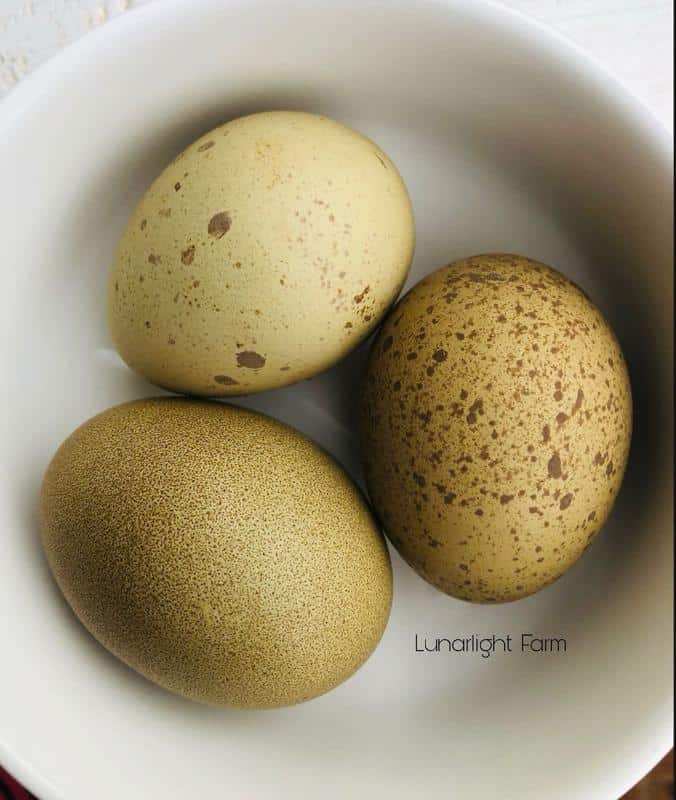
On egg production, you can expect to get anywhere between 3 to 5 eggs from an Isbar hen every week. That translates to about 150 to 250 eggs per year.
That really isn’t the highest yield recorded in the poultry kingdom, but it’s still an impressive count from one chicken.
The eggs are usually medium to large in size, but it’s their green-tinted characteristic that makes them stand out in any egg basket.
Usually, the green color of the eggs is a common characteristic that cuts across all the Isbar variations. That’s to say, whether you have the blue, black, splashed Isbar chicken, or even their offspring in your flock, you should get nothing else but green-tinted eggs from it.
But then, the eggs don’t always come with a pure green color. At times, they’ll have the green tint overlaid with brown or purple speckles, an attribute that makes them even more inviting to behold.
The egg production rolls out at reaching maturity, which is about 22 to 24 weeks, and can continue for a few years before the yield begins to gradually go down as is common with most chicken breeds.
But don’t worry, considering that the breed can lay eggs all-year-round including winters, a single chicken will have racked up a good number of eggs by the time she begins to show signs of approaching retirement.
Breeding
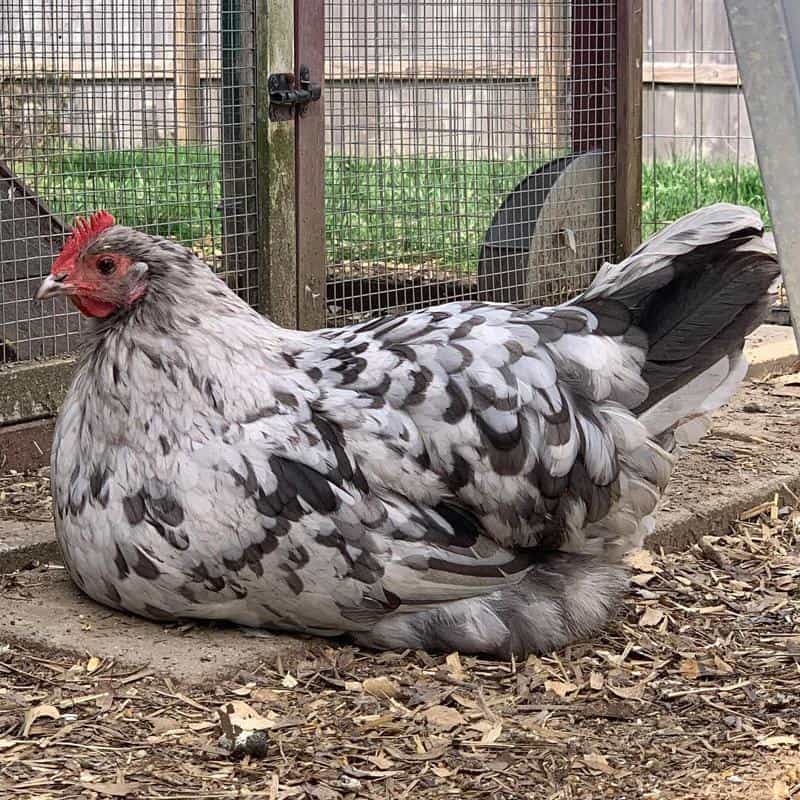
Isbar hens don’t go broody often. That can be good or bad news depending on what you want from the breed. On the good part, not going broody frequently means they can focus more on growing their egg population.
On the bad side, it means they aren’t good at growing their own population, so you may need to use other methods of egg hatching if you need some chicks from them.
But before you hatch the eggs, keep in mind that they don’t always breed true to their color. In other words, if you cross two blue Isbars, it’s not guaranteed that you’ll get a blue offspring. You still can, but don’t be surprised when the chicks come in either of the other two colors.
In addition, although Martin Silverrund had intended to come up with a chicken breed that could be sexed immediately after hatching, that didn’t turn out the case with the Isbar chicken breed.
That’s to say, once Isbar chicks are hatched, you’ll need to wait for a couple of weeks before you can tell the number of girls and boys hatched.
Usually, you can pick out males from the population by looking at the combs — for the roos, the combs will erect faster than those of their female counterparts.
Health Concerns
While Isbar chickens are active birds with a healthy lifestyle, they can still contract a couple of diseases. The illnesses can range from mild and almost harmless to critical conditions that require an immediate medical response.
Immunosuppression, Salmonellosis, and Chronic Respiratory Disease (CRD) are some of the most common conditions in Isobars. The conditions can be life threatening, so get your feathered friend tested immediately you start noticing something unusual about them.
But generally, most of these diseases and many others not mentioned can be avoided through providing proper care. Also, where you get your Isbar chicken matters, so only work with a reputable breeder to minimize chances of such occurrences years down the road.
Dietary Needs
While they’re good at gathering their own delicacy, it’s still essential to ensure that your Isbar chicken feeds as recommended. Usually, you’ll want your Isbar feathered friend to get food containing 16% of proteins alongside some fruits and vegetables.
Also, always keep your flock’s water container ever replenished. Otherwise, your Isbar chickens may be tempted to drink from alternative sources, which could make them sick.
And as usual, occasionally sanitize the drinking zones to keep bacteria and other threats at bay.
Read More:
Summary
Isbar or Silverrud’s blue is a lovely Swedish chicken breed that’s famous for laying cute green-tinted eggs. The low-maintenance breed is generally friendly, lively, and weather-hardy. It loves to free-range, but it can also thrive in confinements.
It’s a generally healthy breed, although it can get sick, especially when not well taken care of. It also doesn’t do well in meat production, but that doesn’t really count much considering that it wasn’t meant to serve as a table bird.
